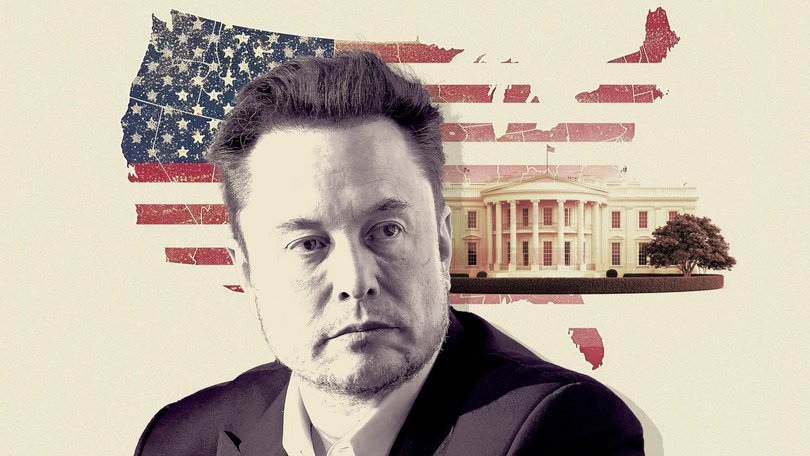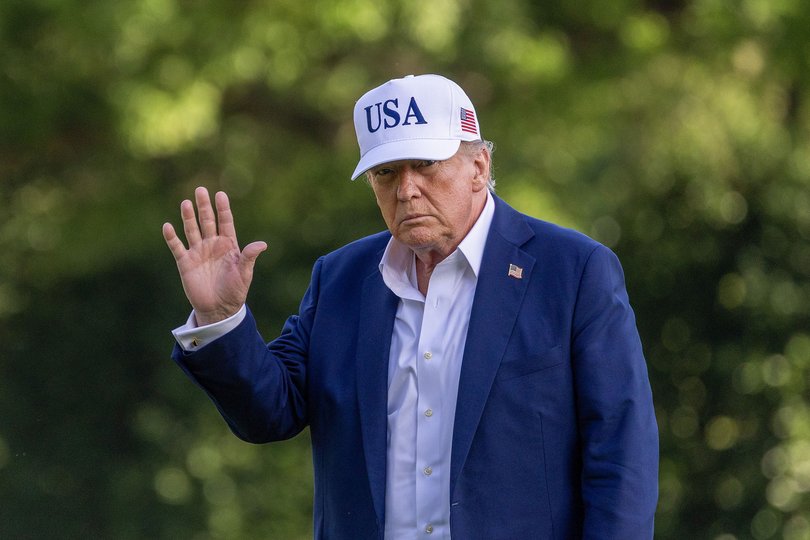THE WASHINGTON POST: Elon Musk’s America Party is a supply looking for demand

The news cycle moves so quickly, it’s hard to believe that just a month ago, Elon Musk was brawling online with President Donald Trump over the catastrophic spending levels of the One Big Beautiful Bill, and now, not only has the bill been signed into law, but Musk has announced the formation of the rather generically named “America Party.” (Not the X Party?)
Musk is obviously bent on revenge against Trump and the GOP for ignoring his warnings about runaway spending, but he says he envisions the America Party as a viable third option to challenge both Democrats and Republicans, or what he calls the “uniparty.”
Over the weekend, he reposted the argument that the people who think a new political party won’t work are the same people who insisted Musk’s rocket company or electric car company or brain chip company wouldn’t work.
Sign up to The Nightly's newsletters.
Get the first look at the digital newspaper, curated daily stories and breaking headlines delivered to your inbox.
By continuing you agree to our Terms and Privacy Policy.It is good and healthy to accomplish great things and conclude, “I am capable of doing great things.”
But the lesson shouldn’t be “Every great thing I attempt will succeed, and everyone who doubts that success is wrong.”
Since 2003, more than half of the country — 56 per cent on average — has agreed that the United States needs a third major political party, according to a Gallup poll in October.
Americans say they want options beyond Democrat or Republican, but when presented with those options in the form of, say, the Green Party or the Libertarian Party, they shrug and pick either the Democrat or the Republican.
In the 2024 presidential election, 98.2 per cent of all votes were cast for either Trump or Kamala Harris. Four years earlier, 98.2 percent of votes were for Trump or Joe Biden.
In 2016, 94.4 percent of votes were for Trump or Hillary Clinton.

Musk posted on July 4: “One way to execute on this would be to laser-focus on just 2 or 3 Senate seats and 8 to 10 House districts.
Given the razor-thin legislative margins, that would be enough to serve as the deciding vote on contentious laws, ensuring that they serve the true will of the people.”
Concentrating efforts in a handful of races rather than attempting to compete seriously in all 435 House districts and the 33 US Senate seats open in next year’s midterms would indeed improve the Musk party’s odds of success.
But recent history suggests that Americans won’t warm to third-party options at those levels, either.
In the Senate, the most successful third-party candidates of recent cycles are Carlton Bowen of Utah, who got 5.7 per cent of the vote in 2024; Rick Becker of North Dakota with 18.5 per cent in 2022; and Scott Cleveland of Idaho with 8.4 per cent the same year. (An “independent” who caucuses with the Democrats, such as Maine’s Angus King or Vermont’s Bernie Sanders, doesn’t count, nor do cases such as Utah’s Evan McMullin or Nebraska’s Dan Osborn, who ran unsuccessfully as independents after Democrats had essentially conceded the race.)
Third-party or independent candidates have performed better in House races in recent cycles.
Last year, Nadia Milleron won 36.2 per cent of the vote in Massachusetts’s 1st District, but that finish comes with an asterisk, as incumbent Democrat Richard E. Neal ran with no Republican opposition.
Greg Kidd won 36.1 per cent in Nevada’s 2nd District, but again, incumbent Republican Mark Amodei had no Democratic opposition.
Note that none of the candidates above came even close to winning.
Americans keep saying they want another option, but they don’t vote like it.
That’s a pretty important detail if you want to influence government policies.
Musk’s effort sounds something like the unsuccessful No Labels movement to recruit a 2024 presidential candidate.
Musk’s politics are somewhat fiscally conservative — opposed to high taxes and regulation, worried about excessive spending — but socially liberal, if not libertine.
Among America’s elites, the combination of fiscally conservative and socially liberal, generally characterised as libertarian, isn’t all that rare.
But it is rare in the US electorate: A June 2024 survey and analysis estimated that libertarians make up about 4 per cent of the electorate.
Most Republicans are socially and economically conservative, most Democrats are socially and economically liberal, and a decent chunk of the populist MAGA movement probably qualifies as socially conservative and economically liberal.
If Musk wants his new third party to have a chance, he’ll first need to convince more Americans that a combination of fiscally conservative and socially liberal policies is the best way to go.
